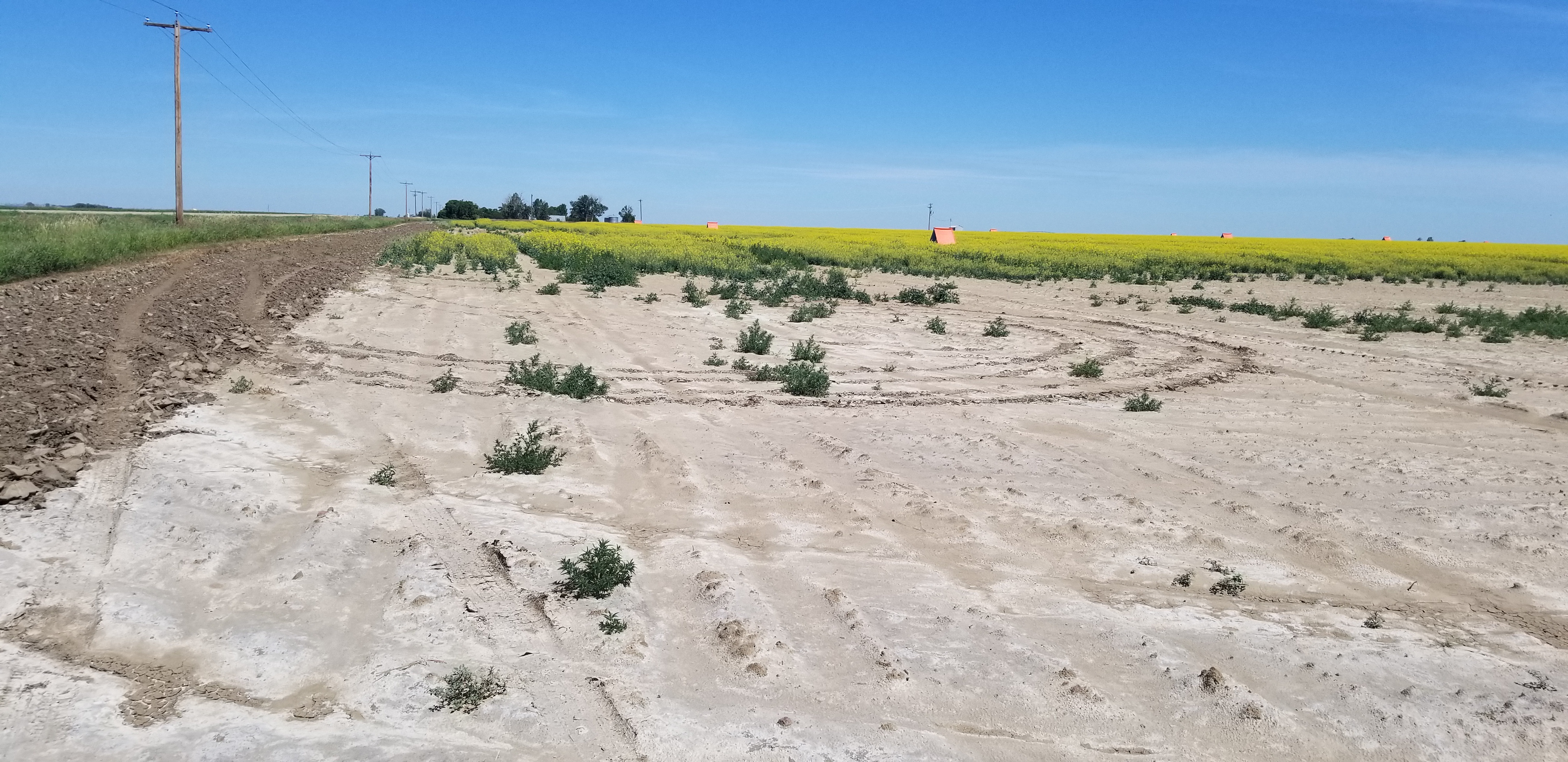Use mechanical or biological intervention
The development of salinity is a gradual process intricately linked to issues pertaining to water management. A previous article delved into the primary factors underlying salinity and the scope of the issue in Alberta.
Swift mitigation measures are imperative to effectively manage the salinity issue. Failure to do so leads to its continued exacerbation. You can address the problem of salinity through either mechanical or biological interventions. Mechanical interventions address the water drainage issues. When there is excessive water in soils, it tends to percolate down and pick up dissolved salts. When the water table gets within two meters of the surface, the capillary action of soil pores draws the saline water up into the root zone. There, it evaporates, leaving the excess salts behind.
 This is an example of a spot that needs mitigation
This is an example of a spot that needs mitigation
Surface drainage in the recharge areas can prevent excess water from percolating downward in the soil. Furthermore, tile drainage systems can help remove excess water away from discharge areas, mitigating salt accumulation. However, mechanical drainage solutions can often incur significant financial cost to producers.
Salt-tolerant crops like barley and alfalfa can effectively combat low to moderate salinity levels - such as those stemming from contact or slope-induced seeps, where groundwater flows close to the surface.
Alfalfa has deep rooting systems – sometimes reaching as deep as three meters in soil and is known for its substantial water consumption. The extensive root system of alfalfa plays a pivotal role in mitigating salinity by extracting excess moisture from the soils.
However, if the salinity levels are too high, the only viable course of action may be to take the land out of production and establish perennial forages. Forage grasses like tall fescue, or saline tolerant grasses like AC Saltlander offer good options. The selection of salt-tolerant forage or forage mixes will depend on the intended land use for the affected area, as some species are more adept at establishing in highly saline zones, while others are better suited for livestock forage with moderate salinity tolerance.



